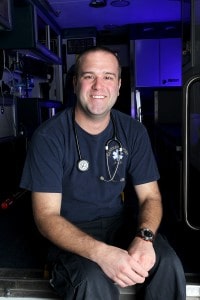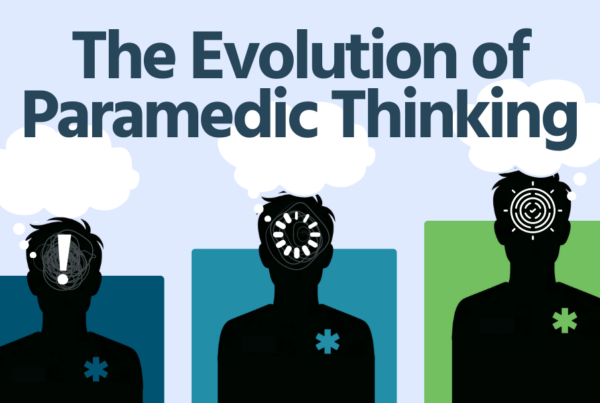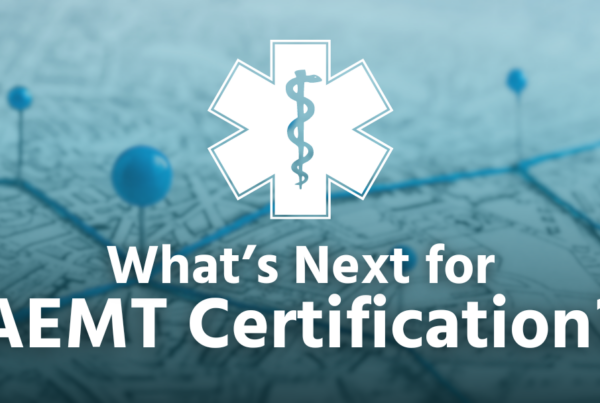EMS relies on tradition and habit. We’ve done things for a long time and we were often reluctant to change. We get frequent emails from students arguing that a patient should receive oxygen by NRB when that hasn’t been recommended since late 2010.
We’ve compiled our list of things that students should be taught and current EMTs should know. Let us know if you have any others for the list.
 1. We don’t suction newborns unless they are in distress.
1. We don’t suction newborns unless they are in distress.
Just the thought of not suctioning a newborn is traumatic for us. The AHA and NRP guidelines are clear: even in the presence of meconium, no suction unless the baby is in distress. While we were happily suctioning out what the baby will eventually cough up or absorb we forgot that pesky little thing called hypoxia.
2. Enough with the backboards.
Our protocols change slowly but how long do we wait until we stop precautionary backboarding and use a solid spinal examination to decide whether the patient needs spinal motion restriction—on the cot. Physician groups and science are in favor of this. And while we are on the subject of backboards…
3. Patients with penetrating trauma shouldn’t be immobilized unless there is sign of spinal injury.
Taking that time has no value and it increases mortality.
4. High flow oxygen by non-rebreather mask may actually be harmful.
We get emails from students telling us that their educators still teach this. Ugh. [Resource: A Tale of 4 Patients]
5. And finally, for the love of God, STOP USING “EMT-BASIC.”
We didn’t like that level when we had it. It was too dumbed down. But now we see job ads, course listings and even providers calling themselves “Basics” when that has been out for several years and replaced with what we should have been all along: EMTs.
What else would you add?



Im not an EMT but ive been a 1st responder and a FF for 6 years and im taking my EMT starting in August. Something I would add is that its ok to be emotional . When you have a bad call its ok to be upset. And definitely talk to someone if you feel overly emotional. Your department or partner will always be willing to have an open ear. Never lose hope and never lose emotion.
Hi Misty–while this article was largely clinically based, there is certainly a lack of teaching (and maybe even understanding) about how to deal with emotions in EMS. I’m an old timer and think a lot about that topic. EMS has lost some great people. Some have left the business, others have taken their own lives. I wrote a blog post called “Does it Hurt to Care More?”. You can find it here: http://limmercreative.com/does-it-hurt-to-care-more/
I believe the answer to that question is no. I agree with you that caring helps more than it hurts.
It is vitally important to take care of ourselves, or patients and our colleagues. Thanks for writing.
Hello there Dan Limmer and company. I an EMT and I just got into the EMS Educators last month and I just cannot overstate the fact that you have been a great asset to me. I look forward to learning even more now that I am gonna be busy spreading the gospel of EMS on a new level. Keep up the good work! Greetings from Kenya.
Julius–thank you for your note. I am thrilled you find us to be a great asset. We all learn continuously. I wish you the best spreading the “gospel.” Please keep in touch.
Adding more dressings to a wound after the first dressing has soaked through does not stop severe bleeding. Adding even more dressings on top of the other blood soaked dressings does not help either. Adding another layer of dressings doesn’t stop the bleeding. If the dressings are soaked with blood, remove the dressings find the source of the bleeding, reapply direct pressure or apply a tourniquet.
Greg–there is a lot of old habit and mantra to break–and you picked a good one here. In the grand scheme it isn’t enough to memorize steps, our EMTs must know how to make decisions when faced with severe bleeding.
I had another great discussion today with someone about where the tourniquet should go: two inches above the wound or as the military seems to do, at the proximal portion of the extremity.
I disagree with you on this. Removing the dressings removes what platelets have accumulated. Then the clotting cascade has to start again. If that patient is on Plavix or Lovenox or Xaralto, the clotting cascade won’t work normally. Direct pressure and move quickly to pressure points and tourniquet use. Reinforcing dressings is okay to do but that doesn’t stop you from looking for the source of bleeding. Or thinking about the vessels involved due to mechanism of injury. Tourniquet use is important to know. Be sure and document time on. Stabilize and transport. Let the surgeon tie off the bleeders.
Russell–Thanks for the comment. One of the big issues with discussing bleeding is that all bleeding is not the same. In a venous bleed where direct pressure has been effective there is no need to remove the dressing. However in an arterial bleed where bleeding has not been controlled there is no clot. In this case, removing a dressing to apply fingertip pressure within the wound or to apply a hemostatic agent does require removal of the dressing. In this case I believe it is OK. I would also add that pressure on large pile of soaked dressings becomes too diffuse and is not effective.
I think one of the greatest issues is differentiating true exsanguinating bleeding from lesser bleeding and making appropriate and timely decisions. This leads to better thinking and appropriate tourniquet use.
I appreciate the bleeding comments – but I often feel it’s like many things, know your protocols, know your skills, but sometimes you have to make the best decision in the best interest of the patient..
While all levels of EMTs are taught blood sugar checks, it should be STRESSED in their education that ALL altered LOC should get a BS check. Obvious head injuries does not mean that BS is normal or actually cause the trauma. In my opinion, that isn’t stressed enough.
I agree Debbie. I think an even deeper principle is to use a differential diagnostic approach–even at the EMT level. I think many people know that BG readings are important. But where they fail is in recognizing that a diabetic issue may be a cause. Looking at altered mental status differentially and thinking of all the possible causes is crucial.
Couldn’t agree more with this one. I work in an emergency dept and some EMS folks don’t get a fingers stick on the “chronic” etoh patients or they will say ” I didn’t get one because they have no hx of being diabetic”. A couple years ago we had a “non” diabetic with stroke sx come in and her fingerstick was 30.
The oxygen issue is frustrating when protocols still call for high-flow oxygen via non-rebreather mask … if you go with national (AHA) standards to use oxygen only when needed to maintain 92-96% pulse oximetry then you are not following protocol … maybe we are preaching to the wrong choir on this and should be focused on those (medical directors) who write the protocols.
Hi Beth. Yes–perhaps your medical directors should read this–although I suspect they already know. The 2015 guidelines just came out and have reaffirmed the oxygen guidelines.
So it has been 5 years. Many times these aren’t a science issue in a system with outdated protocols. In my experience there are often big committees and daunting procedures standing between you and updated science in your protocols.
I hope you get them changed before the 2020 guidelines release. 🙂
If you want to do something for god’s sake and your patient’s sake! Learn how to assess your patient with what God gave you, your eyes, ears, hands and your brain. Machines and gadgets are nice but they don’t always work and if they are not available then what?
Learn to assess you PT with what medicine* taught you, not god. Religion and medicine have nothing in common.
wrong. God is the ultimate healer and f He guides your actions then success is inevitable.